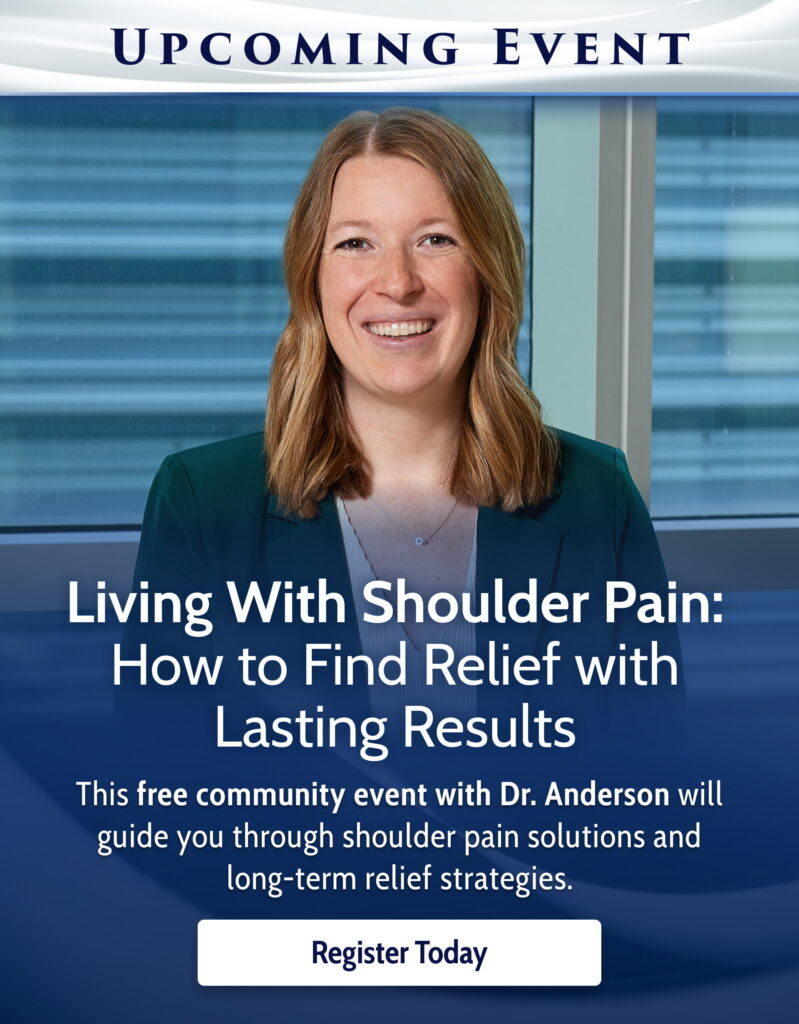Fall sports kick off this time of year in Northeast Ohio, bringing months of memories and mugs of cider and cocoa. However, whether two-a-day practices, weight room conditioning or on-the-field action, autumn also brings its fair share of sports-related, orthopaedic injuries.
As a parent, guardian or coach, you know the awful feeling you get seeing your high school athlete injured or facing nagging pain and discomfort. You need treatment fast and don’t want to get stuck in endless emergency room wait times and referrals.
That’s why at OrthoUnited, we provide state-of-the-art care and a star roster of physicians who coordinate care to get you back in the game. Our physicians are acutely aware of the needs of local, young athletes, with many being on the sidelines themselves as the team doctors for Carrollton, Central Catholic, GlenOak, Jackson, Massillon, and Tuslaw high schools.
“Early intervention and fast access to care”
Dr. Zachary C. Stender knows sports medicine. As a board-certified orthopaedic surgeon, Chicago-native Dr. Stender has served as the assistant team physician for the Detroit Red Wings, Detroit Pistons and Detroit Tigers.
Dr. Stender always emphasizes early intervention and fast access to care as well as the importance of quick treatment to prevent complications and speed up recovery. He also adds that sports-related medicine doesn't only mean playing sports; it often means getting back to doing what you love, like walking, gardening or having fun with friends.
So whether your high schooler is running routes or raking leaves, if they’re experiencing orthopaedic pain - they should see an experienced orthopaedic specialist right away to start the journey to recovery.
The Most Common Sports-Related Injuries We’ll See this Fall
While Dr. Stender and all our sports medicine specialists tailor treatment to your specific injury, health history and anatomy - prevention is still one of the best cures. To help you be prepared for your sports season, here are some of the most common orthopaedic injuries we’ll see this Fall.
Football
- Meniscus Tear
- Patellofemoral Pain Syndrome
- Sprained Ankle
- Knee Ligament Injuries, including ACL, PCL and MCL
- Stinger/Burner
- Shoulder Injuries
Running
- Patellofemoral Pain Syndrome
- Plantar Fasciitis
- Sprained Ankle
- Achilles Tendon Rupture
- Shin Splints
Soccer
- Achilles Tendon Rupture
- Foot and Ankle Fractures
- Sprained Ankle
- Patellofemoral Pain Syndrome
- Knee Ligament Injuries, including ACL, PCL and MCL
Weight Lifting
- Herniated Disc
- Degenerative Disc Disease
- IT Band Syndrome
- Achilles Tendonitis
- SLAP Tear
Five Simple Steps to Prevention
Athletes of all kinds know how important it is never to cut corners. Make sure your high school athlete builds our experts’ prevention techniques into their program.
- Stretching and warm-up routines: Warming up with dynamic stretching before you play can dramatically reduce annoying and all-too-common strains and sprains.
- Cool down properly: After intense exercise or competition, it’s essential to cool down properly. This helps the body transition back to a resting state, reduces muscle stiffness, and supports recovery. Encourage light activity (like walking) followed by static stretching - like classic toe touches and quad stretches. These help improve flexibility and prevent tightness or soreness the next day.
- Cross train: There’s more pressure than ever on young athletes to niche down and find their position and sport. Prevent burnout and overuse by mixing in cross-training as well as a variety of sports and activities.
- Sleep: Make sure your high school athlete gets adequate sleep the night before a competition or try-out. This will not only benefit their athletic career but also their academic life.
- Hydration and heat-related risks: The importance of hydration and injury prevention cannot be overemphasized. Hydration should start two days before a big race or game.
Despite the best prevention, if your high school athlete faces an injury, pain or any sports-related discomfort, the clock is ticking. That’s why with OrthoUnited Express Care, you can skip the E.R. wait and seek immediate care for orthopaedic issues.
How OrthoUnited’s Express Care Works
If you or your high school athlete suffer an accident, injury or other acute pain, it’s important to see an orthopaedic specialist as soon as possible. Choose OrthoUnited’s two Express Care locations for the best care from friendly and experienced staff. Here’s what you can expect.
- When you visit OrthoUnited’s Express Care, an orthopaedic specialist will assess your problem using state-of-the-art diagnostics.
- Next, we move on to immediate treatment using nonsurgical therapies, medicine or injections for pain relief.
- Most of the services you will need are handled on-site, with access to the latest technology to provide you with the best care available.
OrthoUnited’s Express Care puts you in the room with an experienced orthopaedic specialist who will diagnose and treat your condition on site. No appointment needed!
Conclusion
While there are simple steps to injury prevention, accidents happen in any sport or activity. Parents, guardians and coaches can skip the emergency room wait and experience immediate state-of-the-art diagnostic care and treatment for their high school athletes with OrthoUnited.
Here’s how to get started:
- Visit an OrthoUnited Express Care location to be seen right away.
- Make an appointment with our easy-to-use online scheduling. Or call one of our convenient office locations to ask about scheduling a same-day appointment.
